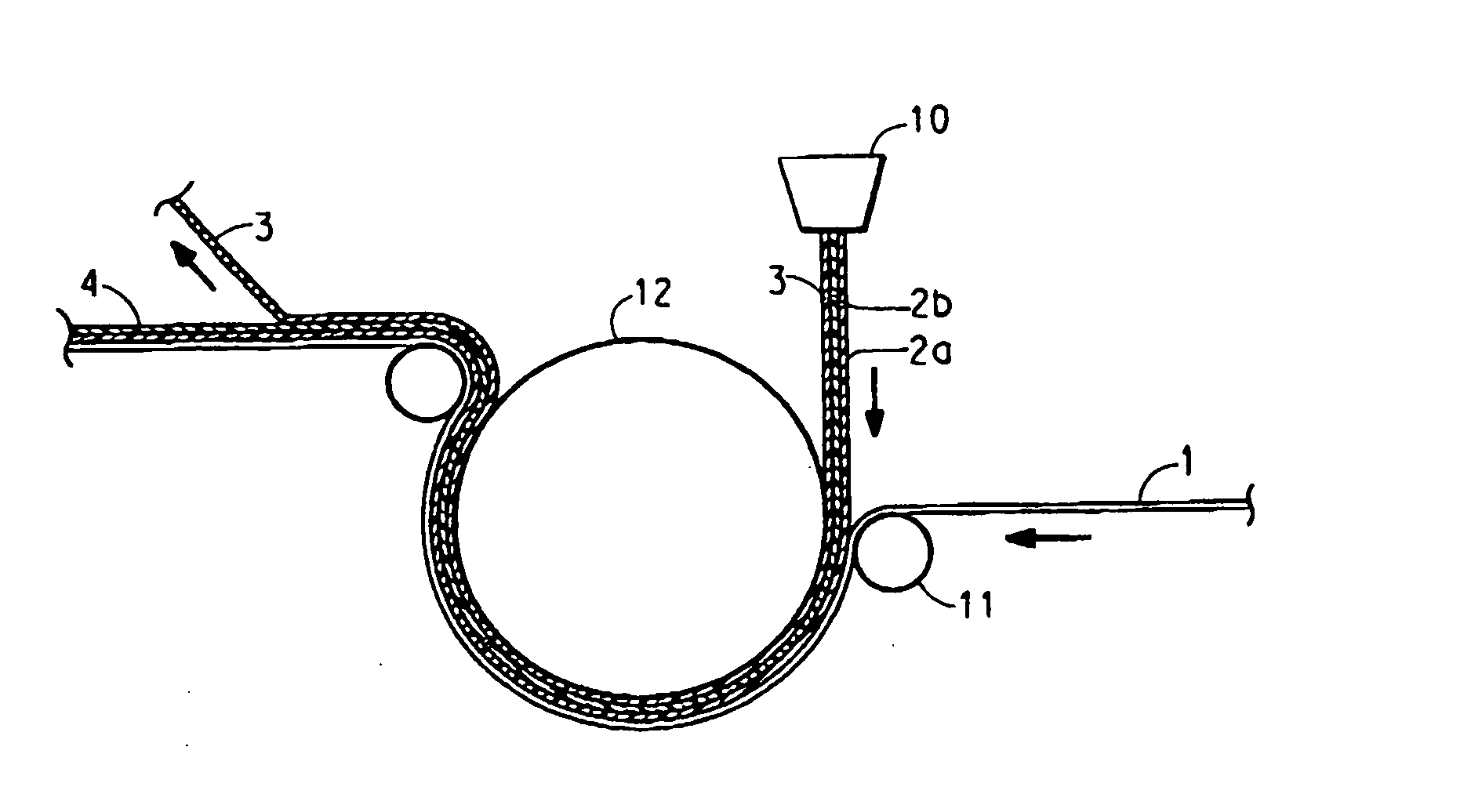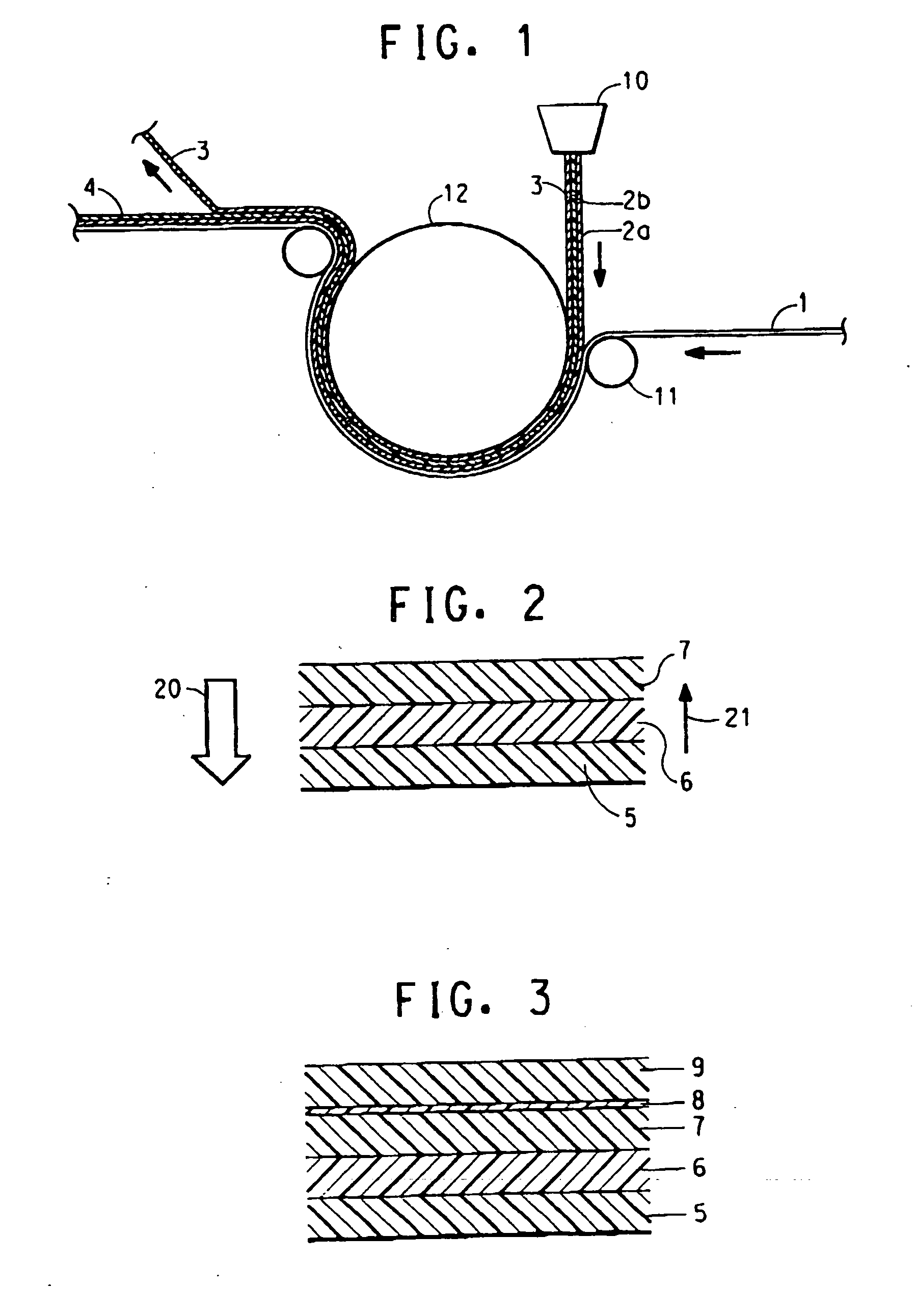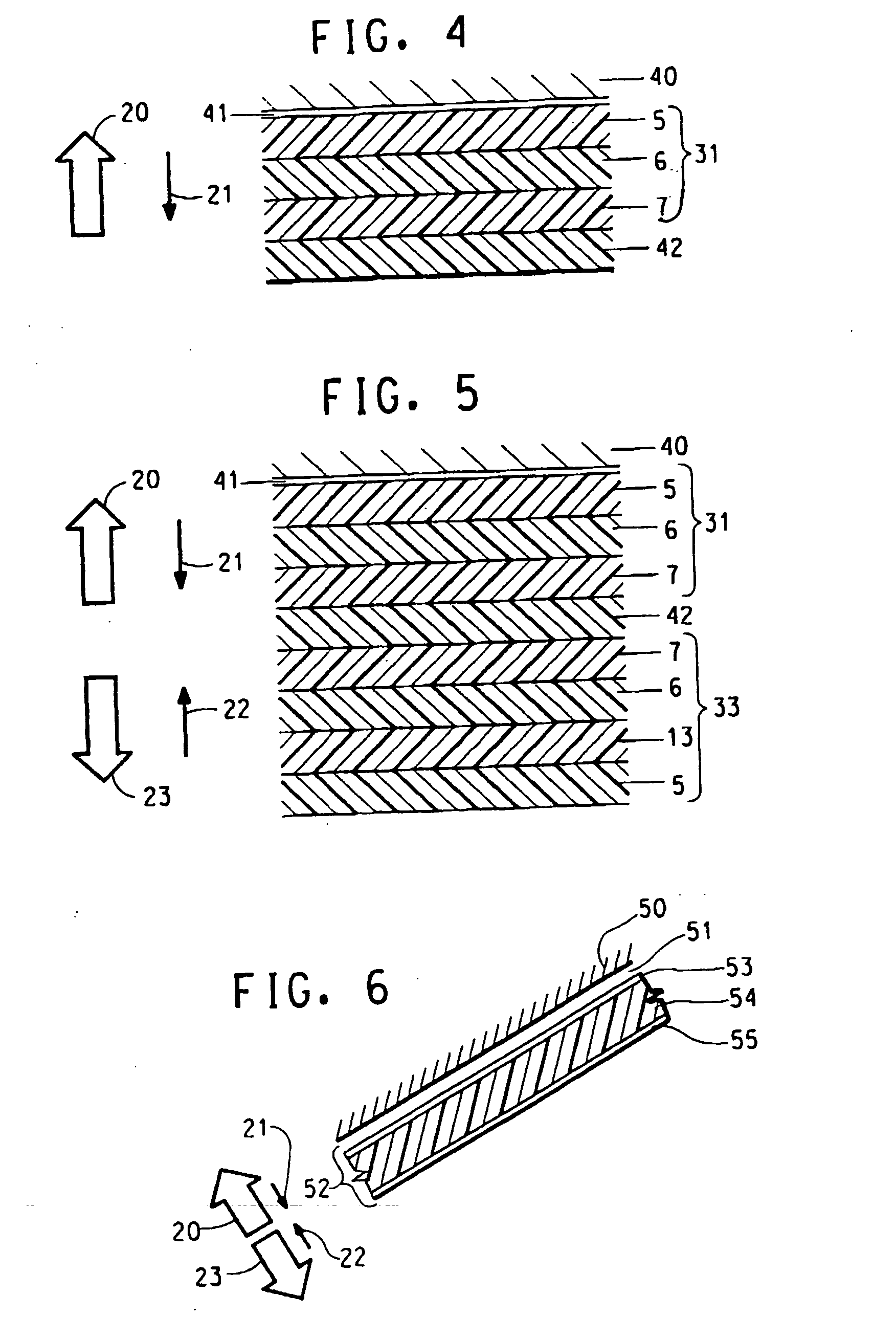Laminate structure
a polymer film, laminate technology, applied in the field of laminate or multi-layer polymeric film structure, can solve the problems of affecting the quality of laminated materials, affecting the appearance of laminated materials,
- Summary
- Abstract
- Description
- Claims
- Application Information
AI Technical Summary
Problems solved by technology
Method used
Image
Examples
example 1
[0148] A copolyetherester film of the AM 6000® polymer was extrusion coated onto the PP nonwoven substrate described above according to the process of Comparative Example 1, with the following additional steps. An EVA tie layer (ELVAX® 3175; E. I. du Pont de Nemours and Company)was extruded from a 2.5 inch (64 mm) diameter, 40 HP screw extruder that was also connected to the BAC three layer melt combining block. The EVA polymer was fed to the melt bloc at a melt temperature of 240° C. A bi-component molten film with the copolyetherester as the A layer and the LDPE as the C layer was extruded through the die. The molten film was brought into contact with the corona treated PP substrate as described in Comparative Example 1, with the EVA side of the film facing the PP substrate. The laminate removed from the chill roll had a 25 μm thick copolyetherester film layer and a 3 μm thick EVA film tie layer between the copolyetherester layer and the PP substrate. As summarized in Table 1, the...
example 2
[0149] A copolyetherester film of the AM 6000® polymer was extrusion coated onto the PP nonwoven substrate described above according to the process of Example 1, with the following additional steps. A low density polyethylene was (STAMYLAN® 8108 LDPE from DSM) was extruded from a 3.5 inch (90 mm) diameter, 150 HP screw extruder that was also connected to the BAC three layer melt combining block. The LDPE polymer was fed to the melt bloc at a melt temperature of 250° C. A three-component molten film, with the copolyetherester layer A sandwiched between the LDPE layer B on one side and the EVA layer C on the opposite side, was extruded through the die. The molten film was brought into contact with the corona treated PP substrate as described in Comparative Example 1, with the EVA side of the film facing the PP substrate. The laminate removed from the chill roll had a 3 μm thick film EVA layer adhered between the PP substrate and a 25 μm thick copolyetherester film layer. A 2 μm thick ...
example 3
[0150] A copolyetherester film of the AM 6000® polymer was extrusion coated onto the corona treated PP nonwoven substrate described above according to the process of Example 2, except that the melt feed rate for the LDPE polymer was increased so as to obtain a 20 μm thick LDPE film layer. As summarized in Table 1, with this change, the bond strength between the substrate and the film layer was such that the polymer film failed before the film delaminated from the substrate. The tear strength of the polymer film, measured according to ASTM D1004, exceeds 100 N / m.
[0151] The MVTR ratio of the laminate of Example 4, with the peelable release layer removed, was measured as follows. Using the standard test NF G52 (“up cup” method at a temperature of 32° C.), the MVTR wherein the substrate was facing humidity was measured at 1076 gm / m2 / 24 hrs, and the MVTR wherein the copolyetherester-containing layer was facing humidity was measured at 2328 gm / m2 / 24 hrs. The MVTR ratio is therefore 2.16....
PUM
| Property | Measurement | Unit |
|---|---|---|
| Percent by mass | aaaaa | aaaaa |
| Percent by mass | aaaaa | aaaaa |
| Percent by mass | aaaaa | aaaaa |
Abstract
Description
Claims
Application Information
 Login to View More
Login to View More - R&D
- Intellectual Property
- Life Sciences
- Materials
- Tech Scout
- Unparalleled Data Quality
- Higher Quality Content
- 60% Fewer Hallucinations
Browse by: Latest US Patents, China's latest patents, Technical Efficacy Thesaurus, Application Domain, Technology Topic, Popular Technical Reports.
© 2025 PatSnap. All rights reserved.Legal|Privacy policy|Modern Slavery Act Transparency Statement|Sitemap|About US| Contact US: help@patsnap.com



